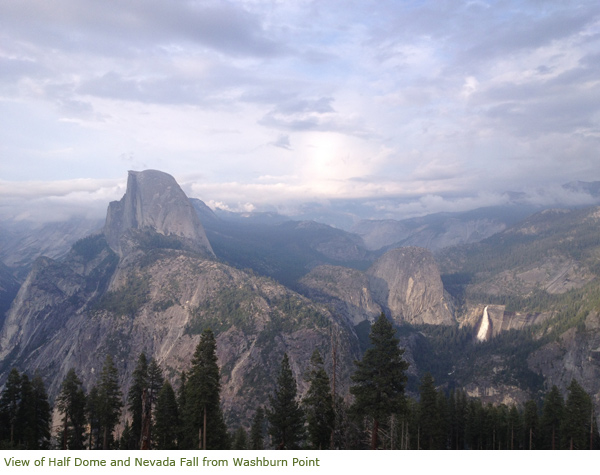Many people recount stories to me about their own past experiences in Yosemite National Park. These tales typically have a consistent theme of how a much admired object such as Half Dome or the Grizzly Giant has been visited and in many cases re-visited by an individual over a period of many years. However, what these tales imply is not only an affinity for the aesthetic beauty of the area, but furthermore a connotation that these objects and the areas that surround them are unchanging and have very few dynamic properties. Yet, these same features in actuality symbolize periods of great fluctuation both in growth and maturity.
The mighty giant sequoia trees which populate the Tuolumne, Merced and Mariposa Groves begin life at the humble size of seed no larger than a flake of oatmeal. Gradually over many centuries, a sequoia will attempt to spring above its forest brethren at the rate of approximately two feet a year while at the same time expanding at its base a full inch in diameter under optimal conditions. The culmination of such an effort may result in a mature tree that over the span of few thousand years might represent one of the largest living organisms on earth.

Half Dome, the great monolith that oversees the east side of Yosemite Valley, is being reshaped on a constant basis due to the weathering of exfoliation joints. This constant weathering sheds thin layers of surface granite helping to form the iconic dome which we have come to know and adore. In a greater context, the mountain range that Yosemite is part of, the Sierra Nevada, is progressively rising at an amount of one to two millimeters a year. At this rate, it will take 2,772 years for the Sierra Nevada range to grow another sixty-nine inches which, coincidently, is the average height of an American adult male. While this may seem like a dawdling rate of growth in the lifespan of a human, it should be pointed out that the Sierra Nevada has been growing at this rate for at least the last three million years. Furthermore, the Sierra Nevada range is approximately 60 million years old. While this span of time may seem like an eternity, the Sierra Nevada range is actually described as "young" in relation to more aged mountain ranges such as the Appalachians which started to form 300 to 480 million years ago. Therefore, the Sierra Nevada range of which Yosemite is a part of is only coming of age and much like a teenager, is predisposed to experiencing growing pains as it develops and matures.
In sum, the grand features of Yosemite National Park have a magnetism that draws not only individuals, but entire generations of people back time and time again to bask in its rich splendor. Yet, a lifetime of our own visits only represents a brief heartbeat in the constantly changing existence of this dynamic landscape. Just as we grow and mature, Yosemite grows and matures too. Consequently, we should acknowledge this linear progression of growth and celebrate not only how we've changed and developed over our lifespans, but how the Yosemite area has progressed over its lifespan as well.
